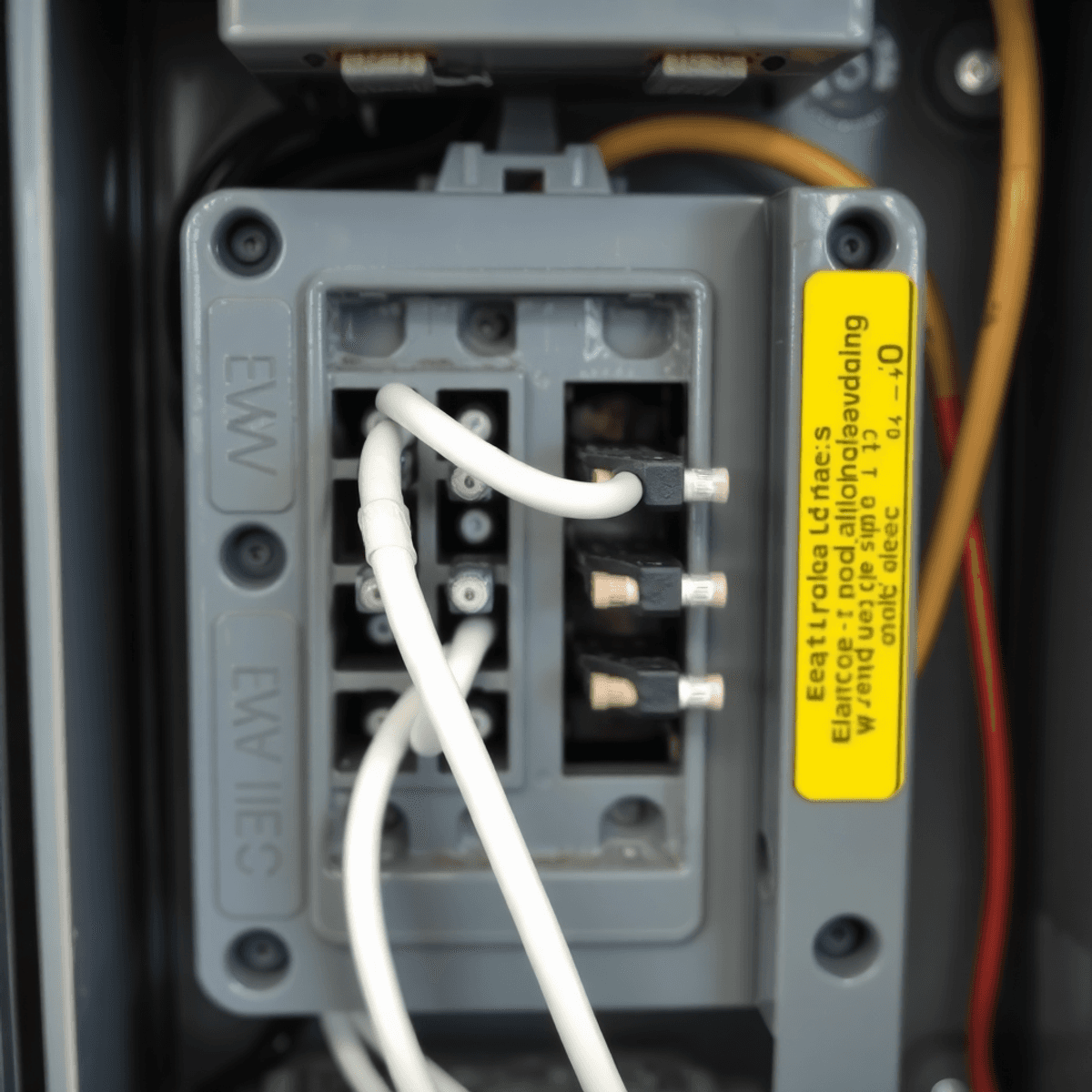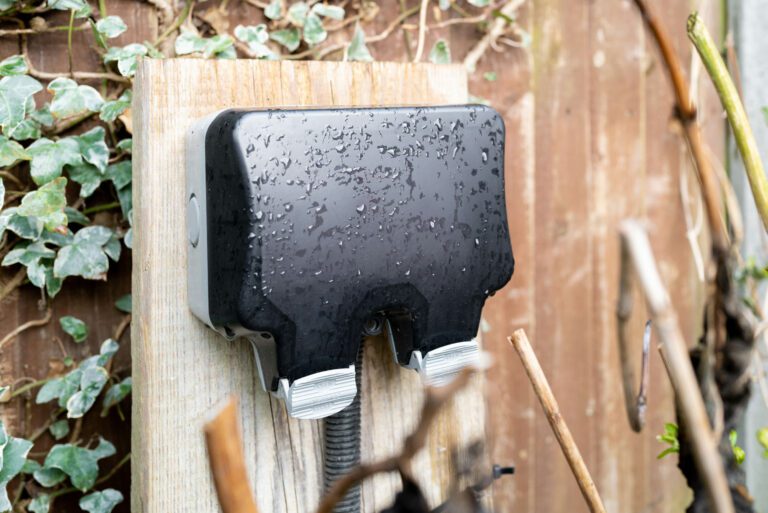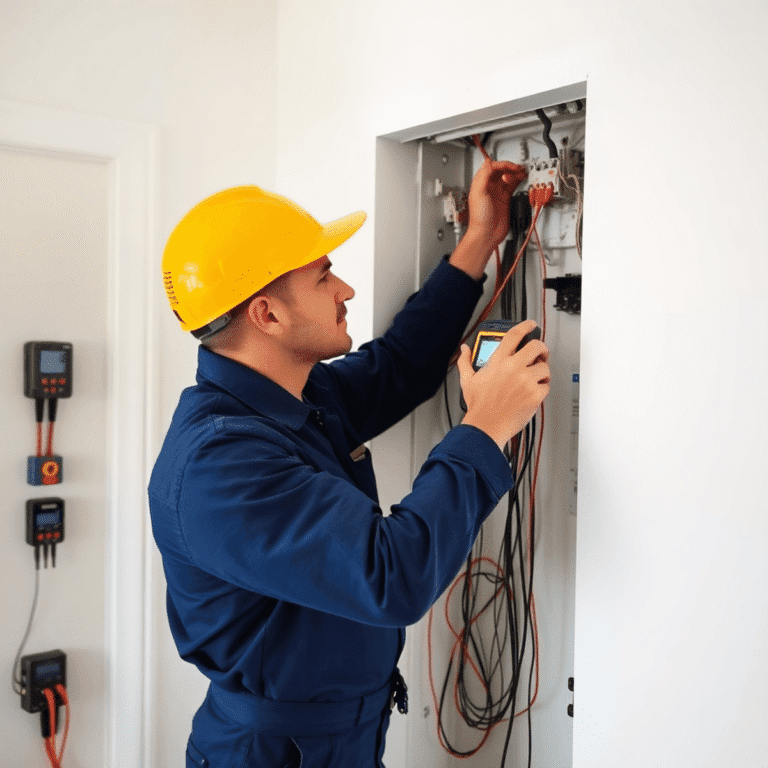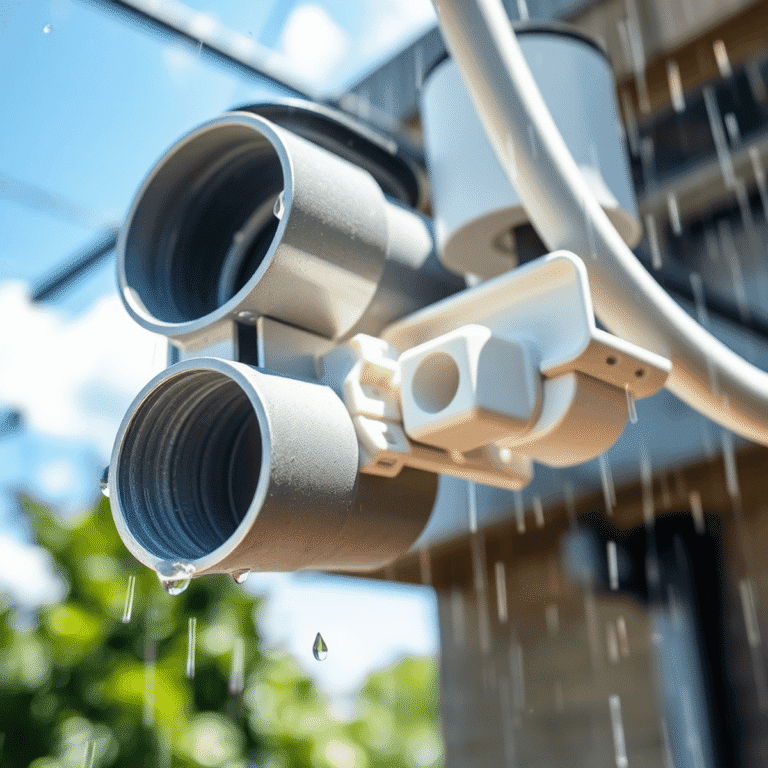Why Some Homes Have Neutral and Earth Bonding Issues
To ensure electrical safety in your home, it’s important to have a clear understanding of neutral and earth bonding. In every electrical wiring system, the neutral wire serves as the pathway for current to return and complete the circuit, while the earth (or ground) wire plays a vital role in safety by directing any stray electrical current safely into the ground. Properly connecting these wires through bonding is essential for the safe and efficient operation of your electrical system.
When neutral and earth bonding is not done correctly or is compromised, it can lead to serious safety hazards such as electric shocks or an increased risk of fire. Additionally, poor bonding can negatively impact the performance of sensitive electronics and appliances.
Some common problems that homeowners may face include:
- Receiving unexpected electrical shocks from appliances or outlets
- Circuit breakers tripping without any obvious reason
- Lights flickering or experiencing power surges without explanation
Understanding the reasons behind neutral and earth bonding issues in certain homes is crucial for preventing accidents and ensuring optimal performance of your electrical system. If you are encountering any of these issues, it is important to reach out for professional assistance. Don’t hesitate to contact us for expert advice and help with electrical safety and bonding problems.
Understanding Neutral and Earth Bonding
A safe and effective electrical system relies on the correct use of both the neutral wire and the ground wire. Each plays a distinct role in keeping homes powered and protected.
1. Neutral Wire
The neutral wire acts as a return path for electric current, allowing electricity to complete its journey through your appliances and back to the power source. Without the neutral, circuit completion would fail, causing devices to stop working or behave unpredictably. For example, in a typical lighting circuit, the active (live) wire delivers power to a light fixture, while the neutral wire provides a path back, enabling consistent operation.
2. Ground Wire
The ground wire does not carry current during normal operation. Its main function is safety—directing fault currents safely into the earth if something goes wrong with the wiring or an appliance. If live wires touch metal surfaces or moisture intrudes, the ground wire channels dangerous voltages away from people and property, reducing shock risks and fire hazards.
3. Significance of Proper Bonding
Effective bonding between neutral and ground wires occurs at only one designated point—usually at the main switchboard or service panel. This connection ensures that fault currents have a direct route to trip protective devices like circuit breakers. Inconsistent or multiple bonds can create unsafe paths for electricity, undermining both safety mechanisms and overall system reliability. For instance, improper bonding can lead to scenarios such as those discussed in this forum thread, which highlight serious safety concerns.
Incorrect bonding compromises both circuit completion and protection, potentially exposing homeowners to unnecessary danger and equipment damage. Understanding these roles is critical before exploring why issues with bonding develop in residential settings.
Main Causes of Neutral and Earth Bonding Issues
1. Older Wiring Methods or Code Changes
Certain older wiring methods can lead to neutral and earth bonding issues in homes. Practices that were once standard may no longer meet current safety standards, creating potential hazards.
Impact of outdated wiring practices on current safety standards:
- Knob-and-tube wiring: This early method, used in homes built before the 1950s, does not include a ground wire, posing significant risks in today’s electrical landscape.
- Two-prong outlets: These outlets lack a grounding connection, increasing the likelihood of electrical shock and hindering the performance of modern electronics requiring a three-prong plug.
- Unbonded metal conduit: Metal conduit systems without proper bonding can become live if a fault occurs, presenting serious shock hazards.
Potential violations due to code changes over time:
- Electrical codes are continually updated to improve safety and efficiency. Older installations may not comply with these updates, leading to violations.
- Absence of Ground Fault Circuit Interrupters (GFCIs): Previous codes did not mandate GFCIs in wet locations like bathrooms and kitchens. Modern codes require them to prevent electric shock.
- Inadequate grounding systems: Earlier standards might have permitted inferior grounding methods that are no longer acceptable. Up-to-date codes demand more robust systems to ensure safety.
Neglecting to upgrade these outdated systems can result in dangerous conditions and non-compliance with present-day electrical codes.
2. Shared Grounding Electrodes or Multiple Ground Rods
Explanation of ground loops in shared grounding systems:
Shared grounding electrodes or multiple ground rods can create ground loops. These loops occur when there are differences in potential between grounding points, allowing unwanted currents to flow through the ground system.
Effects of circulating currents on power quality and noise levels:
Circulating currents caused by ground loops can introduce electrical noise, leading to interference with sensitive electronic equipment.
Power quality issues such as voltage fluctuations may arise, affecting the performance and lifespan of appliances.
Ensuring a single, uninterrupted ground path is crucial for maintaining stable power quality and minimizing interference problems. Proper inspection and maintenance by qualified professionals help address these issues effectively.
2. Shared Grounding Electrodes or Multiple Ground Rods
Ground loops can occur in shared grounding systems, where there are multiple paths for electrical current to return to the ground. In residential settings, this often happens when neutral and earth wires are incorrectly connected across multiple grounding electrodes or ground rods.
These incorrect setups result in circulating currents that flow through the grounding system instead of following a single route. This circulation can disrupt the stability of the electrical system, leading to power quality issues. Homeowners may notice unpredictable behavior in sensitive electronics like computers and entertainment systems due to these fluctuations.
Moreover, noise levels within the electrical circuits can rise, potentially interfering with communication lines or data transmission systems. This is especially crucial in homes with advanced data services or high-tech equipment.
Recognizing these possible problems emphasizes the significance of following current electrical codes and best practices when installing or maintaining grounding systems. Properly handling neutral-to-ground connections ensures a safer and more dependable electrical environment for your home.
3. Improper Installation or Maintenance
Improper installation or lack of maintenance is a major reason why some homes have neutral and earth bonding issues. Even in houses wired according to previous electrical codes, the quality of the original work and ongoing upkeep makes a dramatic difference in safety and performance.
Loose connections at bonding locations are one of the most common—and dangerous—problems. When a connection between the neutral or earth wires loosens due to poor workmanship, vibration, or age, it creates resistance. This can cause excessive heat, arcing, and ultimately fire hazards. A single loose screw or corroded clamp at a switchboard can compromise the protection for an entire circuit.
Mixing up neutral and ground wires during repairs or upgrades is another frequent cause of safety risks. Sometimes, especially in homes with older wiring methods or shared grounding electrodes, it’s tempting for unqualified individuals to combine neutrals and grounds as a shortcut. This practice bypasses critical fault protection mechanisms and allows unintended current on grounding paths—turning exposed metal pipes, conduit, or even structural steel into potential shock hazards.
Key risks from improper installation or maintenance include:
- Unreliable fault current paths: Faults may not trip breakers as intended.
- Shock risk: Energized surfaces due to stray currents.
- Code violations: Non-compliance with updated safety standards.
Proper identification, secure terminations, and periodic inspections by certified electricians are essential to avoid these hazards. These steps keep your system safe and compliant with evolving regulations.
4. Accessory Buildings or Outbuildings
Proper neutral-to-ground bonding in accessory structures like garages and sheds is crucial to maintain electrical safety and system performance. These buildings often have separate panels, which must adhere to the same strict code requirements as the main house. When the neutral and ground wires are not correctly bonded, it can lead to significant safety risks.
Accessory buildings with older wiring methods or shared grounding electrodes may face issues due to previous electrical codes that are no longer deemed safe by modern standards.
Key Issues:
- Failure to meet current code regulations can result in dangerous electrical faults.
- Improper bonding can create a scenario where fault currents do not clear effectively, posing a risk of electric shock or fire.
Ensuring that accessory buildings comply with updated electrical codes and standards helps protect both property and occupants from potential hazards. Regular inspections and upgrades by certified professionals can help identify and rectify any bonding issues before they escalate.
5. Equipment Installation Errors
Incorrect management of neutral-to-ground bonds when adding new equipment to home electrical systems can introduce significant challenges. Homeowners often install generators or solar power systems as upgrades to their original setup. These installations require meticulous attention to bonding schemes to avoid complications.
Potential conflicts in bonding schemes arise when older wiring methods and previous electrical codes are not considered during these upgrades. For instance, equipment might be installed with shared grounding electrodes which can cause safety risks if not handled correctly.
When multiple ground rods are used, it is crucial to ensure they are bonded effectively. Failing to do so may lead to circulating currents that impact power quality and noise levels. This is why understanding and adhering to current bonding requirements is essential.
Proper installation and maintenance practices play a crucial role in mitigating these issues. Loose connections or the improper mixing of neutral and ground wires can lead to operational inefficiencies and pose serious safety risks.
By recognizing these challenges and addressing them promptly, homeowners can ensure their electrical systems function smoothly and safely, avoiding potential problems associated with improper equipment installation.
Ensuring Proper Electrical Bonding for Safety
Maintaining safe electrical bonding in homes requires adherence to best practices and regular inspections by qualified professionals. Here are some key strategies:
1. Regular Inspections
Schedule periodic inspections by certified electricians to identify and rectify any bonding issues. Regular maintenance ensures that all connections remain secure and compliant with current safety standards.
2. Correct Neutral-to-Ground Connections
Ensuring proper neutral-to-ground connections at the designated main service point is crucial for effective fault current clearance. This setup allows fault currents to be safely directed away from the system, preventing potential hazards.
3. Proper Installation Techniques
Utilize correct installation techniques when wiring new systems or upgrading existing ones. Avoid mixing neutral and ground wires improperly, as this can lead to dangerous conditions and system inefficiencies.
4. Professional Expertise
Engage professionals like Protek Electrical and Data, known for their reliability and expertise in maintaining high safety standards. Their experience in installations, repairs, upgrades, and maintenance ensures that your home’s electrical system operates optimally.
5. Code Compliance
Stay updated with the latest electrical codes and standards. Code changes over time necessitate adjustments in wiring practices to maintain compliance and safety.
By following these best practices, you can ensure that your home’s electrical system remains safe, efficient, and compliant with regulatory standards.
Conclusion
Addressing neutral and earth bonding issues promptly is crucial for maintaining electrical safety and ensuring optimal system performance in your home. Ignoring these problems can lead to serious hazards, including electrical shocks, fire risks, and compromised power quality.
If you suspect any issues with your wiring systems, it is essential to seek professional help. Certified electricians have the expertise to inspect, diagnose, and rectify bonding problems effectively.
Taking preventive measures through regular inspections and adhering to proper bonding practices will protect both your property and its occupants. Prioritize electrical safety by keeping your home’s wiring up to code and well-maintained.
Whether you’re dealing with outdated wiring methods or improper installations, addressing these concerns is vital for a safe living environment.
FAQs (Frequently Asked Questions)
What are neutral and earth bonding issues in home electrical systems?
Neutral and earth bonding issues refer to problems in the electrical wiring where the neutral wire and ground wire are improperly connected or bonded, leading to safety hazards and reduced system performance.
Why is proper neutral and earth bonding important for electrical safety?
Proper bonding between the neutral and ground wires is crucial to ensure effective fault current clearance, prevent electrical shocks, reduce power quality problems, and maintain overall safety in home electrical systems.
What are the main causes of neutral and earth bonding issues in homes?
Common causes include older wiring methods or outdated electrical codes, shared grounding electrodes causing ground loops, improper installation or maintenance like loose connections, accessory buildings with separate panels lacking proper bonding, and equipment installation errors such as incorrect bonding in generators or solar power systems.
How do older wiring methods contribute to neutral and earth bonding problems?
Older wiring practices may not comply with current safety standards or electrical codes, leading to potential violations and unsafe conditions due to improper bonding techniques used at the time of installation.
What risks do shared grounding electrodes pose in electrical systems?
Shared grounding electrodes can create ground loops where circulating currents cause interference, resulting in power quality issues and increased noise levels that affect system reliability and safety.
How can homeowners ensure proper neutral-to-ground bonding for safety?
Homeowners should have regular inspections by qualified professionals to verify correct neutral-to-ground connections at the designated main service point, promptly address any wiring issues, especially when adding new equipment, and adhere strictly to current electrical codes to maintain safe electrical bonding.









